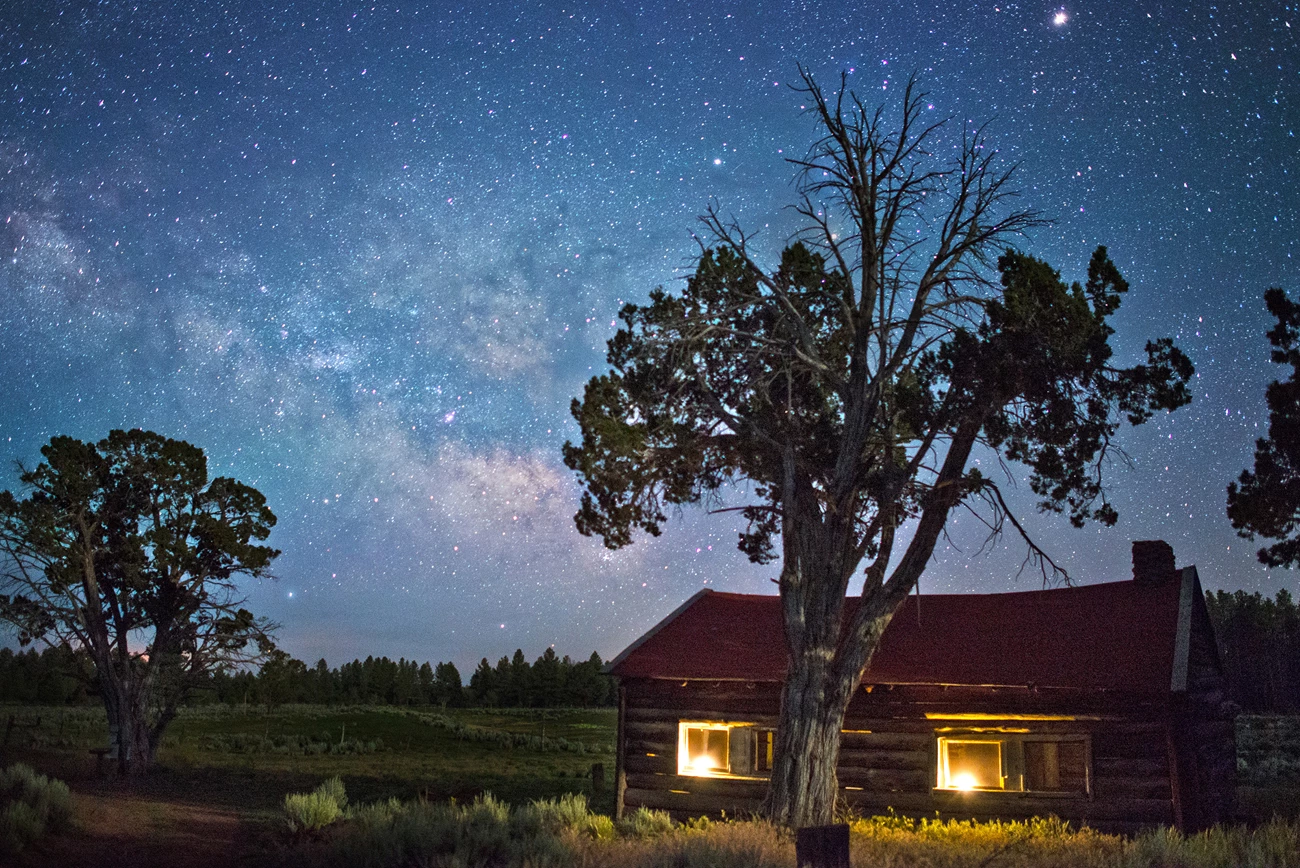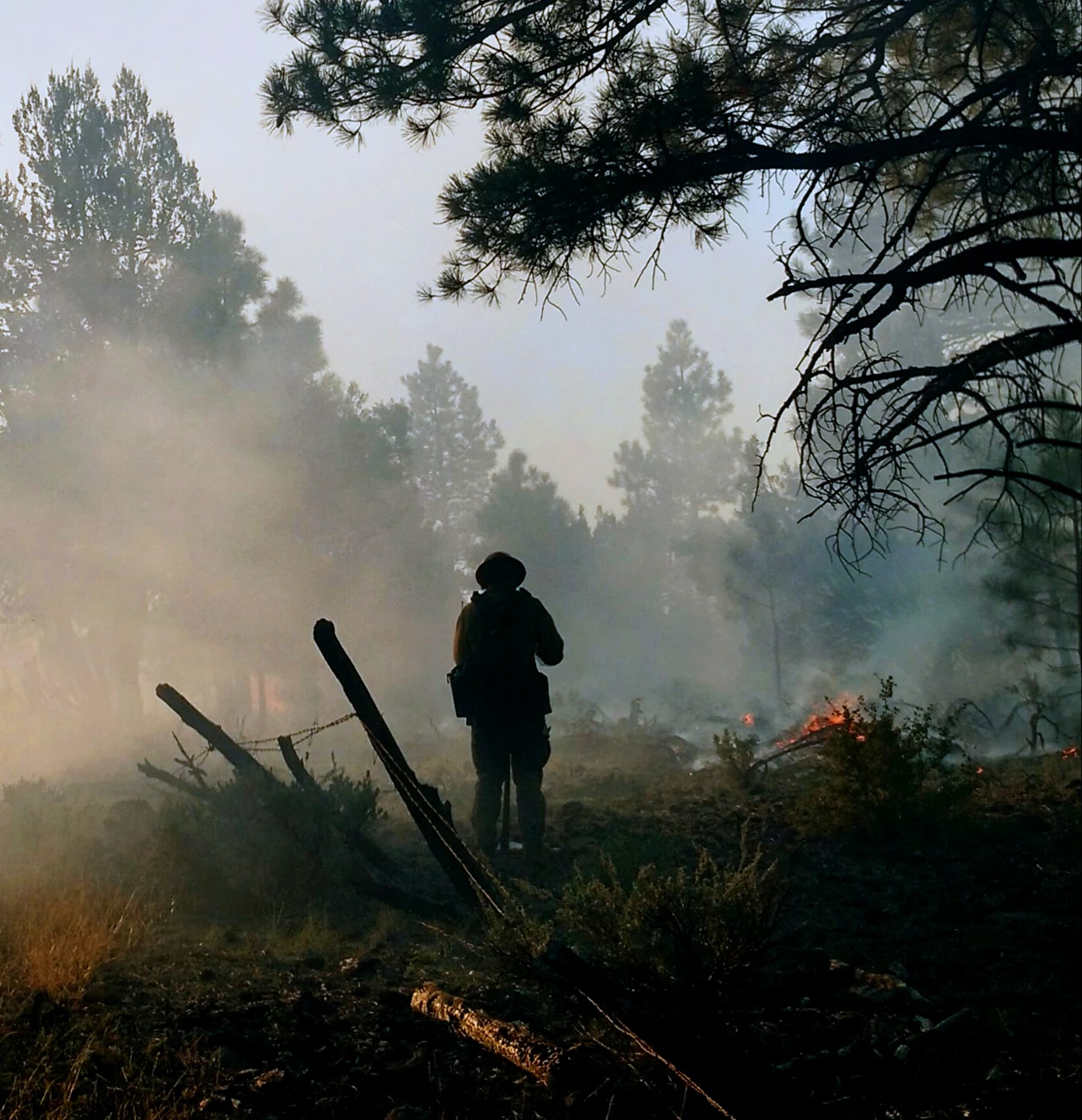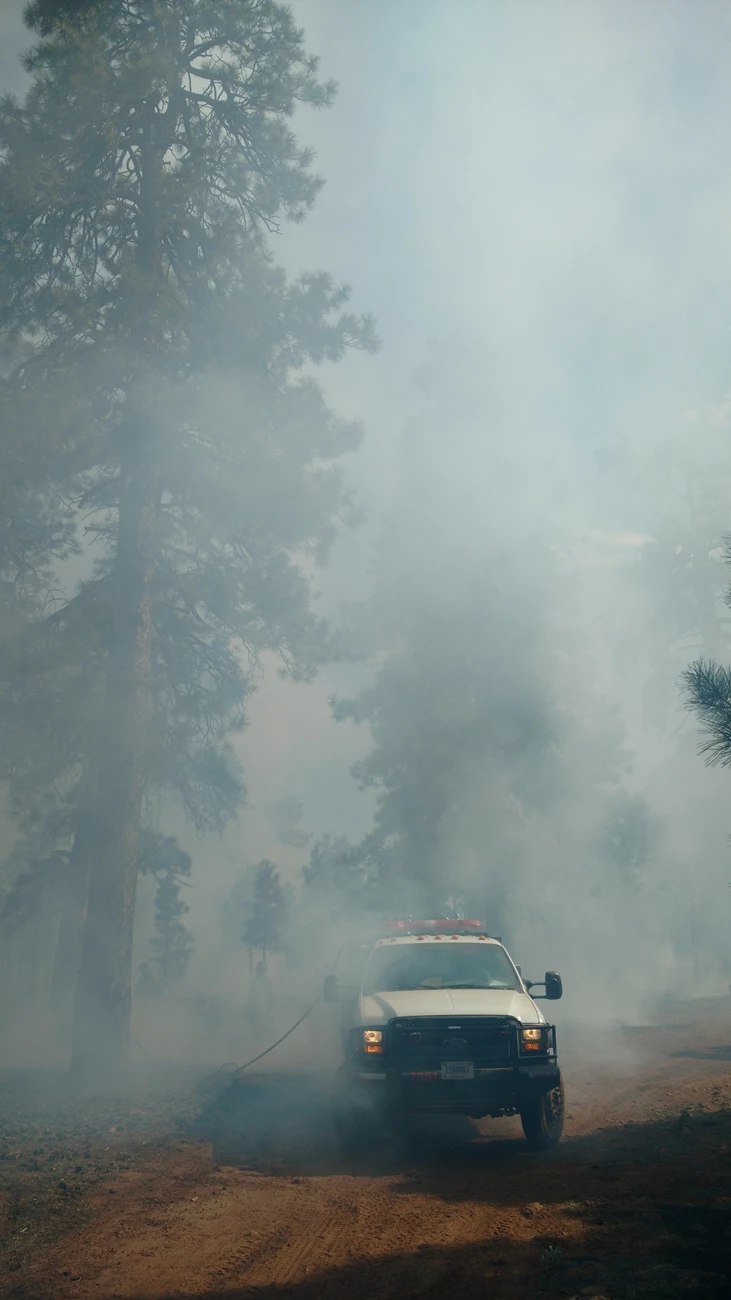Last updated: October 9, 2018
Article
Partnerships between Resources and Fire Benefit Cultural Landscapes at Parashant National Monument

NPS photo by Todd Miller
Partnerships between Resources and Fire Management
Over the past several years, the fire program for Lake Mead National Recreation Area (LAKE) and Grand Canyon-Parashant National Monument (PARA) has made strides in benefiting cultural and natural resources at both units. Based out of Boulder City, Nevada, the fire program manages and conducts fire and fuels projects for Great Basin National Park, Death Valley National Park, as well as fire suppression for LAKE, Tule Springs Fossil Beds National Monument, and NPS lands within PARA.
In addition to their duties toward fire protection and suppression in the region and on national teams, Lake Mead Fire Management Officer John Foley and Assistant Fire Management Officer Tiege Downes have implemented prescribed fire projects at PARA. This has helped return NPS lands on the Shivwits Plateau within PARA to a pre-settlement fire regime, and restored a landscape to one that more resembles the historic condition of the ranch lands and Paiute homelands protected by the monument designation.
Cultural Inventories Conducted Prior to Fuels Treatments
From 2010-2018, the fire program has completed 16,000 acres of work on several prescribed fire units within PARA, including 2,000 acres of thinning and 14,000 acres of burning. The most recent prescribed fire in September, 2018 treated 1,800 acres in two previously thinned units. Work in 2019 will include 3,000 acres in an additional two units. The units, very remote from LAKE Headquarters, require long travel over rough roads and multiple days of backcountry camping to efficiently complete the thinning and prescribed fire projects.
As part of the planning for prescribed fires, crews from the LAKE Cultural program undertake intensive inventories of the units and record any cultural resources encountered. As a result, the cultural resource crews have documented hundreds of prehistoric and historic archaeological sites. Data from these sites adds important information for research and management purposes.
In addition, the concentration and quantity of sites found reinforce the monument proclamation regarding the importance of cultural resources within its boundaries. A recent fire unit survey discovered a 10,000-year-old stone tool artifact, as well as the remains of one of the first ranch fences in the area from over 100 years ago.

NPS photo
The Role of the Resource Advisor During Fuels Treatment Implementation
Once a prescribed fire plan has been approved, the archaeological technician from PARA serves as a Fireline Resource Advisor. This person works with the burn boss and firing and holding crews to make sure that crews avoid cultural resource locations or protect them from burning.
Historic ranch features like buildings and fences are given special attention, with avoidance or protection planned prior to the beginning of operations. On a recent prescribed fire, crews protected a cliff-edge hoist works associated with a historic copper mine by using a 1/4-mile safety buffer. Using similar buffers, crews also protected brush and log corrals built for wild horse round-ups during the Great Depression.
Ecological and Cultural Benefits of Fuels Treatments on the Landscape
Besides seeking to reintroduce fire to benefit the ponderosa pine stands and other ecological components on the plateau, crews are putting a lot of effort into restoring the historic feel of monument lands. Using chainsaws, crews lop and cut down young juniper trees that are filling in the forest along old ranch roads. Crews will burn these areas to consume the slash and encourage plant diversity.
Horse Valley Meadow, an expanse of open sage and grass covering hundreds of acres, was cleared of junipers that had grown in since the historic Waring Ranch was acquired by the federal government. Crews saved time by using buffers and avoiding culturally sensitive areas. They were able to use the time saved to clear the vegetation that had grown up around historic locations like the Green Springs Sawmill and the Waring Ranch Horse Valley House, improving the visitor experience.

NPS photo
Success Through Interagency Collaboration
The LAKE/PARA fire program has succeeded through cooperative efforts between programs and agencies. Crews from other national parks, as well as personnel from the US Fish and Wildlife Service and the Bureau of Land Management (BLM), prepare burn units, thin fuels, and conduct prescribed fires. The Las Vegas BLM Helitack crew have assisted with aerial ignitions, and Las Vegas BLM crews are part of firing and holding teams. Recently the BLM Vegas Valley hand crew, made up mostly of military veterans, conducted chainsaw work and constructed a lengthy fire line in preparation for an upcoming prescribed burn.
Success is the result of a lot of hard work towards a shared vision of restoring the national monument landscape. The commitment of the LAKE/PARA Fire program to this vision, and the resulting benefits to the culturally sensitive landscape and ecosystem, are clear. The benefits to PARA will continue well into the future.
Tags
- lake mead national recreation area
- grand canyon-parashant national monument
- fire
- prescribed fire
- fire ecology
- cultural resources
- fire management
- resource management
- grand canyon-parashant national monument
- lake mead national recreation area
- cultural landscape
- partnerships
- cohesive strategy
- maintain and restore resilient landscapes
- interagency collaboration
- success stories
- wildland fire
